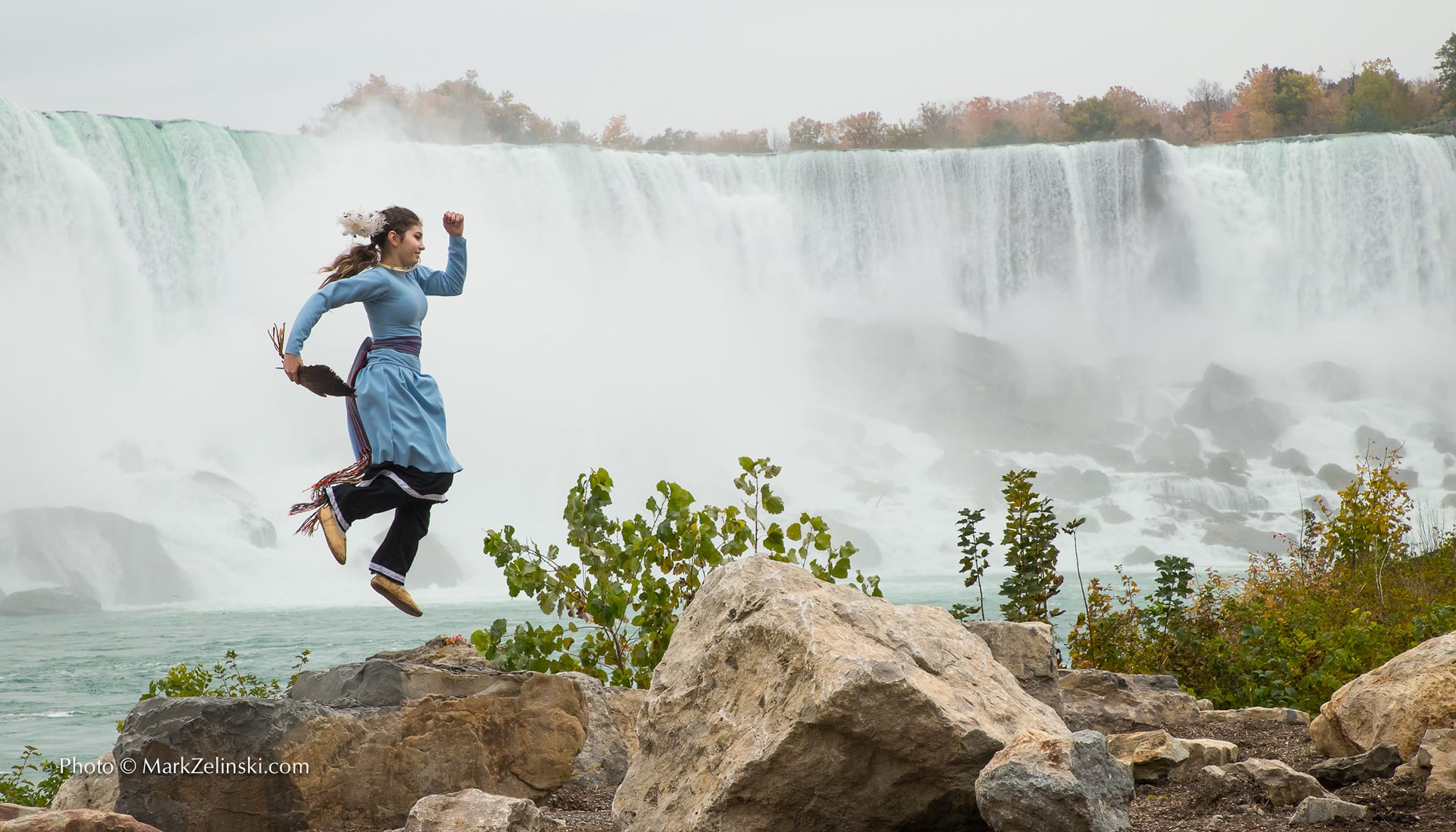
Photography by MarkZelinski.com
Niagara Falls as Natural World Destination
As evidenced through 400 million years of geology that dates back to the earliest formation of the Niagara Escarpment itself, this remarkable landform, which gives Niagara Falls its power — kinetic, cultural, and technical — serves as the foundation for how visitors experience the region.

Photography by MarkZelinski.com
Kiera Barnhardt performs the Haudenosaunee Smoke Dance to music performed by Frank McNaughton at the Horn Dock, lower Niagara River, with the American Falls in the background. This image was produced for thegreatniagaraescarpment.ca Indigenous Cultural Map.
After the War of 1812, peace was restored to the border region and tourism began to blossom. Niagara Falls eventually became known as a place for honeymooners to visit. As travellers increased so too did the making of souvenirs. On the American side, a series of islands allowed the visitors to stand between the two mighty falls. Because of their faithful service during the War of 1812, the Porter family, which had acquired most of the land adjacent to the falls on the American side, allowed Seneca and Tuscarora women to sell moccasins, dolls, and heavily beaded purses, picture frames, wall hangings, and sofa pillows.
These became highly sought-after souvenirs and provided an important income to the local Indigenous economy, which once thrived on hunting, fishing, and trapping in the region, but became constrained to small "reserves" of land in both Western New York and Southern Ontario.